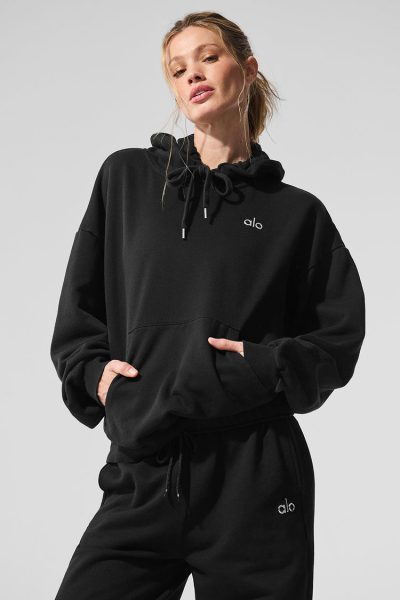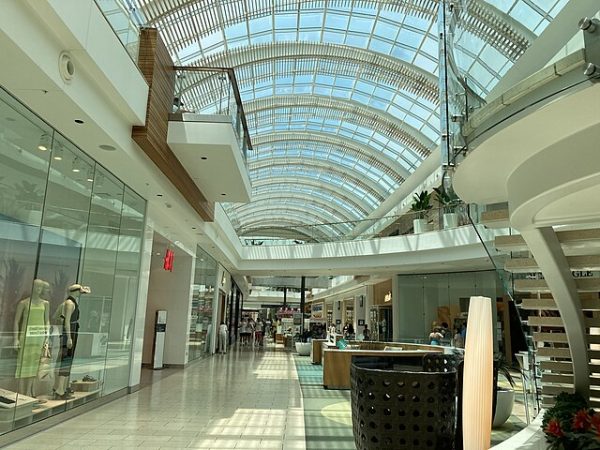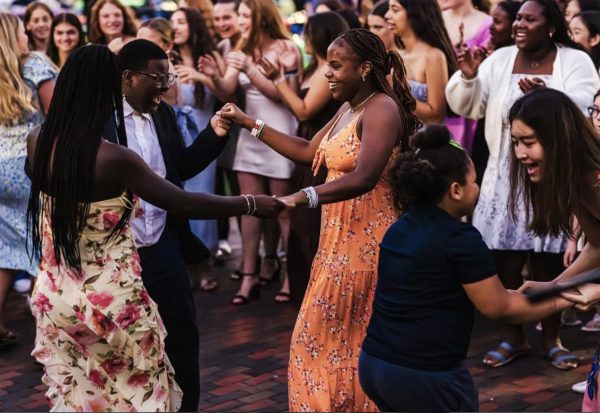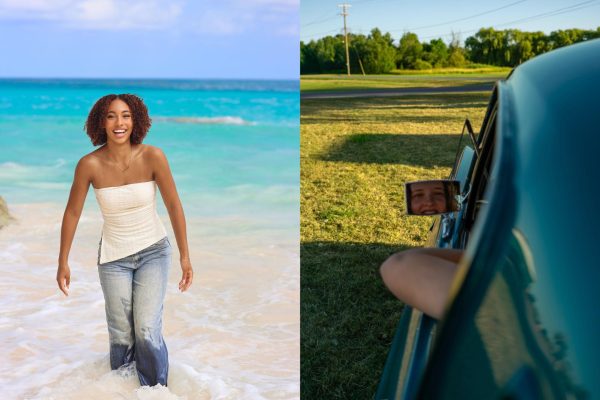Private Schools or Public Schools?
Parental Decisions: Why Parents Send their Children to Private or Public Schools
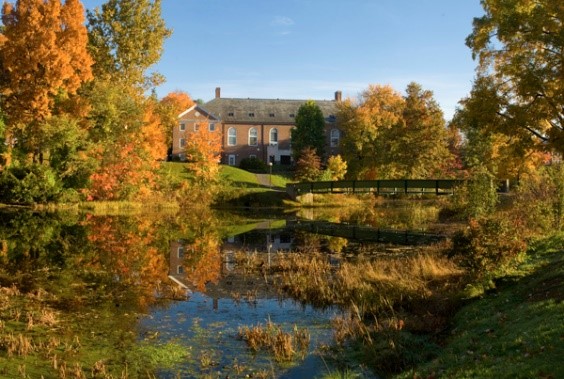
The view of the Williston Northampton School in the fall, facing the Reed Campus Center.
With today’s high cost of education, many families struggle to meet the financial demands of a college education. Yet every year, according to the National Center for Education Statistics, roughly 4.9 million American children are enrolled in private school. The cost of education can reach nearly $60,000 a year.
The Council for American Private Education conducted a survey to get a general consensus of why parents are choosing to send their children to private school instead of opting for the free public education route.
The survey listed twenty-one possible options, allowing parents to select as many or as few options applied to them. Within the data collected, 85 percent of parents chose to send their children to private school for a “better learning environment.”
Other common reasons included a better education, smaller class sizes, more individual attention per child, religious education, more preparation for college, sports, better student discipline, more responsive teachers and administration, and improved student safety.
Interestingly, the council also found that higher standardized test scores were not a main reason many parents chose to send their children to private school. Only 34.6 percent of respondents listing it as a reason, and only 10.2 percent of respondents listing it among their top five reasons.
Alyssa Stevens ‘16 says, “My parents ultimately gave me the decision of where to go to school. After going to public school up through sixth grade, I realized I was definitely not getting the best education possible and the environment as a whole wasn’t somewhere I could prosper.”
Lauren Helm ‘16, a recruited student athlete for the girl’s hockey program at Williston, says, “[Private school] was a decision that I made and my parents supported me the whole way through. I felt that it was better for my student-athlete life because my [athletic] schedule is basically made to fit my schooling life… I can manage my school work and play sports which is the main reason I came to prep school.”
Although some students were the primary decision makers when it came to their schooling life, many parents, who were either financially or ideologically influenced, made the decision for their children.
Katya King, the parent of Pinky King ‘16 says, “We live in a town in which we are not happy with the schools and that is why we enrolled Pinky, our oldest child, at Williston. Pinky had had a good experience at the Middle School, so we decided to enroll Theo [our second child] there too.”
Madi Guyette ‘17 from Hampshire Regional High School, located in Westhampton, Massachusetts, says, “My mom chose to send me to public school because she could not afford a private school education.”
She continues, “I have considered private school and looked into financial aid packages. I recently applied to Stoneleigh Burnham.”
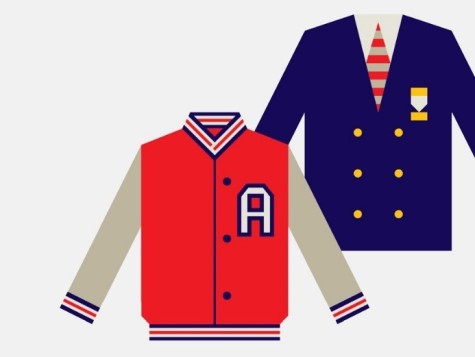
Classic letterman jacket often sported by public school football players in the media (left) and classic private school uniform as portrayed in the media (right)
Most students at private school have attended public school at some point in their lives and can attest for the differences between the two education systems.
Lizzie Cuevas ‘18, who recently transferred over from a public school in Trumbull, Connecticut, to Williston says, “I wanted a better education. To me, that meant being surrounded by people who cared about an education and who were determined to receive an education.”
Cuevas ‘18 also says, “I think one of the biggest differences of private school is that I am surrounded by more people who are self-determined and want to succeed. The fact that we are paying so much to attend school teaches us the value of an education.”
Stevens ‘16 agrees by saying, “[At private school], my classmates are striving for success, just like me. At public school, I felt like students were not always putting in their best effort. It was more difficult to do well in an environment that often lacked motivation and drive toward success.”
Although there are some differences in the mindsets of students at private school compared to public school, the distinction of a public and private education extends far beyond that.
Mrs. King says, “Private schools tend to give more individual attention to students, which can be very positive for a child’s academic development. Williston also had small class sizes and a good reputation.”
The smaller nature of private schools makes it possible to have a small student-to-teacher ratio. This allows teachers to focus on each individual student more than they would typically be able to at a public institution. Many parents and students alike both really value individual attention in the classroom.
Because of graduation requirements at many private schools, private school graduates often complete a wider variety of courses than their public school counterparts, including more advanced placement courses.
Cuevas ‘18 talks about the greater array of courses available at private school, saying, “The courses available at my old school were very general. At Williston, the courses are more specialized and there is a wider availability of electives that I can take to discover what I might be interested in pursuing later in life.”
Guyette ‘17 adds, “I think in private school, you have more freedom to express yourself and more opportunity to learn who you are and use that in a positive way. Whereas in public school, you learn what they teach you and the curriculum is a lot more fixed.”
Stevens ‘16 says that one of the biggest differences between the two school systems are the teachers. “Private school has given me more opportunities than public school ever did,” she says. “I am surrounded and supported by teachers who want the best for their students and truly enjoy what they do.”
A unique addition to the Williston curriculum was the introduction of the Windows Surface Pro in 2013. All 700 members of the Williston faculty and student body received one, fully packaged with applications and software necessary for the school year.
The introduction of these tablets have enabled Williston students to learn in a vastly different way than children at other private or public schools who may not have access to such material.
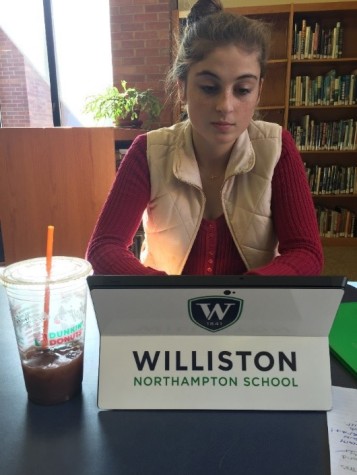
Emma Reynolds ’17 doing her homework on the Windows Surface Pro given to every member of the faculty and student body at the beginning of the school year.
Bryan Bates ’16 says, “The surface and features like OneNote and Veracross makes taking notes and staying on top of your school work a lot easier… You will never lose an important sheet of paper or leave your homework at home because everything is right there on your computer.”
Despite the benefits that private school may hold, the high costs of a private education prevents many families from sending their children to these schools. Only an estimated 10 percent of school-aged American PK-12 children attend private school, while the vast majority of about 50.1 million children, go to public school, according to the Council for American Private Education.
Mrs. King, whose second child, Theo, graduated from Williston’s middle school last spring has recently begun his freshman year at a nearby public school, Northampton High School. She says, “[A private education] was a great financial burden and we were worried about affording to send our third child, Felix, to a private school.”
The King family proceeded to apply “school choice”, a lottery program that allows families to send their children to schools in districts other than the city or town in which they reside. The Kings have since enrolled both their sons into public school and are letting their daughter complete her senior year of high school at Williston.
To accommodate the rising cost of education however, many private schools, including Williston are offering alternatives to the full tuition cost. This includes financial aid, student loan programs from organizations such as Your Tuition Solution, Sallie Mae, and PrepGATE, and Tuition Management Systems that allow families to spread out costs over ten or twelve payments, interest-free.
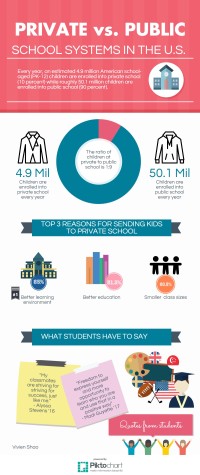
Infographic showing the private and public school systems in the United States




